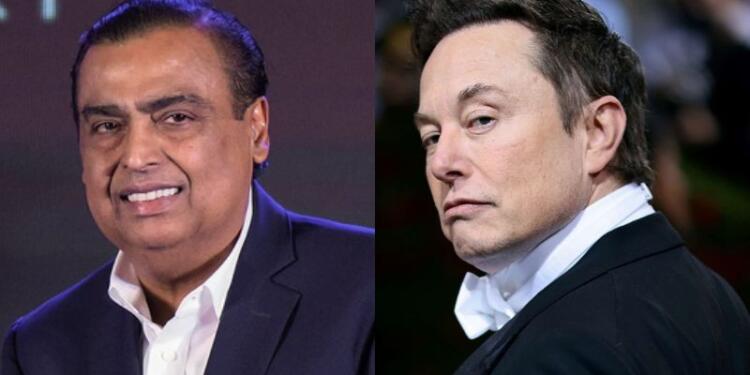Elon Musk is currently the richest man in the world. The owner of Starlink, Tesla, and X (formerly Twitter) is supporting Donald Trump’s election campaign. Meanwhile, Mukesh Ambani, India’s richest man is focused on expanding his business across various sectors. The reason they’re mentioned together here is because if they ever enter a business rivalry, the question arises: who would emerge victorious?
This is not just speculation; it may soon become a reality, as both are eyeing India’s satellite internet market—a nascent industry with massive, guaranteed growth potential.
What is Satellite Internet and what are its future prospects in India?
Currently, most internet connections are based on cables or towers. Satellite internet, however, doesn’t require towers instead it uses a satellite in low Earth orbit to provide connectivity.
The advantages of satellite internet lie in its consistency and reliability. Even in severe weather, the connection typically remains stable. Additionally, satellite internet could be crucial for maintaining connectivity in disaster-hit areas.
In India, satellite internet is not yet available, but interest has surged since the government announced plans to introduce the service. According to reports, the satellite internet market in India is expected to grow by 36 percent annually and reach $1.9 billion by 2030.
What brought Ambani and Musk Face-to-Face?
Musk and Ambani recently clashed over the method of spectrum allocation. For networks like mobile internet, spectrum is allocated through an auction process, meaning the highest bidder wins. However, for satellite communications (satcom), most countries use an administrative allocation method.
India’s laws also provide for administrative allocation for Satcom. However, Ambani’s Jio recently proposed that the government should use an auction method for satellite spectrum allocation. A day later, Musk responded on X, criticizing Jio’s proposal as unprecedented.
Union Telecom Minister Jyotiraditya Scindia later clarified that the government was not inclined to use the auction method for Satcom. On October 15, Musk welcomed the government’s decision to favor administrative allocation.
Why did India opt for Administrative allocation when auctions are considered transparent?
Both methods have their own advantages and disadvantages. While the auction method is generally transparent, it’s only suitable for cases where market-driven competition applies. In auctions, market players set the regulations, but in administrative allocation, the Department of Telecommunications (DoT) retains control.
The main difference between terrestrial networks (e.g., towers and fiber) and satcom is that the former uses an exclusive spectrum, while satcom uses a non-exclusive spectrum.
In terrestrial networks, a specific spectrum is allocated exclusively to a single company within a geographic area, meaning it cannot be shared and can therefore be priced individually. Satcom, however, operates on radio frequencies that use shared spectrum, which cannot be priced individually.
Thus, administrative allocation remains the most feasible option, as Union Minister Scindia reiterated when dismissing the auction method.
Who fairs better in Satcom – Ambani or Musk?
It is still early to predict, but both are dominant forces in the communications market. Musk’s Starlink currently provides satellite services in 36 countries, including the U.S., Canada, and Australia.
Jio, on the other hand, doesn’t currently provide satellite services, but it is one of the largest telecom groups in India, known for adapting to and deploying new technologies. Additionally, Reliance’s financial strength is a significant advantage for Ambani.
However, the Indian satcom market won’t be an easy win, as India has some of the lowest internet rates globally, while satellite internet is expensive. Starlink currently offers a connection with a one-time investment of $599 and a monthly charge of $110. Reports suggest that in India, the cost may be around Rs. 7,000 per month.
The competition between these two communications giants will be interesting to watch, but one thing is certain: a stronger internet connection for Indians in the near future.































